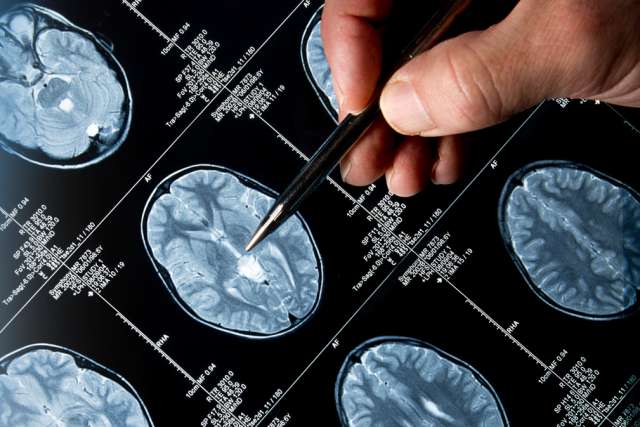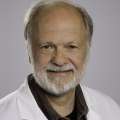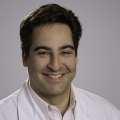Epilepsy Surgery
Our neurosurgeons offer a wide range of advanced epilepsy procedures with exceptional outcomes, including corpus callosotomy and responsive neurostimulation. We treat all types of seizures in adults and children.

Why choose UCLA Health for epilepsy surgery?
The neurosurgeons at UCLA Health have offered surgical treatment for epilepsy for decades. Of the 2.5 million patients in the United States with epilepsy, about 250,000 are potential surgery candidates. Eoilepsy surgery can offer remarkable benefits, with many patients experiencing freedom from seizures after surgery.
Highlights of our program include:
Exceptional outcomes: Our neurosurgeons use advanced techniques that lead to excellent outcomes. For example, more than 80% of patients who have surgery to remove a seizure-causing tumor become completely seizure-free. More than 70% of our temporal lobe surgery patients become seizure-free. Extensive diagnostic testing means we determine the most effective treatment option that leads to the best chance of an optimal outcome.
Dedicated neurology intensive care: Our neuro intensive care unit (ICU) helps patients recover well after brain surgery for epilepsy. The neuro ICU specialists work in close cooperation with your surgeon or other referring provider. The team includes the expertise of specially trained nurses, nurse practitioners, physicians in specialty training (fellows) and attending physicians.
National recognition: Our program is affiliated with the Seizure Disorder Center, a Level IV center with the National Association of Epilepsy Centers. This designation means that we offer comprehensive evaluation and extensive treatment for epilepsy disorders. We provide whole-person care with neurological, neuropsychological and psychosocial treatments. We are recognized leaders worldwide and have pioneered many of the innovations in epilepsy evaluation and surgical treatment.
Types of epilepsy we treat
Epilepsy is a neurological condition characterized by bursts of irregular electrical activity in the brain. This electrical activity is known as a seizure. Seizures cause wide-ranging symptoms, from sensory disturbances to periods of staring, convulsions or loss of consciousness.
There are many types of seizures and epilepsy subtypes. We may offer surgical treatment for:
- Catastrophic epilepsy in infants and small children: This type of epilepsy causes quickly spreading seizures that often severely weaken a child’s arm or leg or affect their development.
- Epilepsy caused by tumors or malformations: Seizures may start in irregular growths (tumors) or tangles of blood vessels (vascular malformations).
- Extratemporal lobe epilepsies: Seizure activity starts in the front, base or middle portion of the brain, often causing convulsive seizures.
- Lennox-Gastaut epilepsy: Rapid spreading of seizure activity causes drop attacks, where a person suddenly loses muscle tone and collapses.
- Mesial frontal lobe epilepsy: Seizures occur in the frontal lobe, the part of the brain that controls movement.
- Mesial temporal lobe epilepsy: Seizures start in the temporal lobe, a small area on the side of the brain that controls processing sounds and memories.
Treatments epilepsy surgeons offer
Patients don’t always need surgery to treat epilepsy. Our team typically recommends trying medications for several months before turning to surgical treatment. However, if medications don’t control seizures, we may consider epilepsy surgery. In some cases, we offer surgery sooner, such as when seizures occur in critical functional areas of the brain.
Surgical treatment may include:
Vagus nerve stimulator (VNS):
A VNS is a small device that is surgically implanted in the chest. Its wires connect to one of the large nerve pairs in the neck (vagus nerve). The wires send small electrical impulses to the vagus nerve. These electrical signals may fire consistently throughout the day, or you may activate the VNS at the first sign of a seizure.
Deep brain stimulation (DBS):
A neurosurgeon creates dime-sized openings in the skull and places electrodes on the brain. Then, they implant a small device under the collarbone that continually sends signals to the electrodes. These electrical signals stimulate the area of the brain where seizures occur to interrupt seizure signals.
Responsive neurostimulation (RNS):
An RNS is a device implanted in the brain that learns to interpret the brain’s signals and identify when a seizure is about to start. It then interrupts the signals in the brain to prevent full-blown seizures from occurring.
Laser interstitial thermal therapy (LITT):
This minimally invasive treatment involves making a tiny incision and inserting a laser fiber directly into the center of a lesion causing epilepsy. We use 3D GPS-like navigation to ensure we accurately place the laser fiber. Then, we use heat to destroy the lesion without damaging surrounding healthy tissue. The ideal candidates for this procedure are those with a small lesion in the deep tissues of the brain (hypothalamic hamartoma).
Surgical resection:
About 80% of the time, removing a brain tumor or vascular malformation that led to a seizure is a curative treatment. We may also safely remove a portion of the brain where seizures occur.
Surgery with brain mapping:
Sometimes, traditional imaging techniques don’t identify the exact source of seizures. Our neurosurgeons use techniques in which we place electrodes on the brain to pinpoint where the seizures are occurring and to identify where essential brain functions occur. This allows us to remove tumors or sections of the brain without damaging any critical functional areas.
Corpus callosotomy:
A neurosurgeon cuts the band of nerve fibers between the two halves of the brain (corpus callosum). This stops seizure signals from firing back and forth between the two halves of the brain. We may offer corpus callosotomy to lessen the severity of seizures that affect the entire brain.
Hemispherectomy:
Rarely, a procedure to partially or completely remove one hemisphere of the brain may be an effective seizure treatment. In carefully selected patients, this surgery is one of the most successful operations at stopping seizures. We typically only offer hemispherectomy to very young patients, ideally under 2 years old, who have severe epilepsy that hasn’t responded to medications and affects only one half of the brain.
Our expert team
Our neurosurgeons use advanced techniques to treat infants, children, adolescents and adults with epilepsy. Many of the tools we use today were pioneered at UCLA Health. Our surgeons are internationally recognized leaders in epilepsy surgery.
Adult Epilepsy Neurosurgery
Pediatric Epilepsy Neurosurgery
Nurse Practitioners
Seizure Disorder Center


Contact us
Call 310-794-1195 to request an appointment with an epilepsy specialist at UCLA Health. To schedule an appointment with the Seizure Disorder Center, please call 310-825-9103 (Adult) or 310-794-1146 (Pediatric).
Find your care
UCLA Health neurosurgeons provide advanced surgical epilepsy treatment. To schedule an appointment with the Seizure Disorder Center, please call 310-825-5111.












